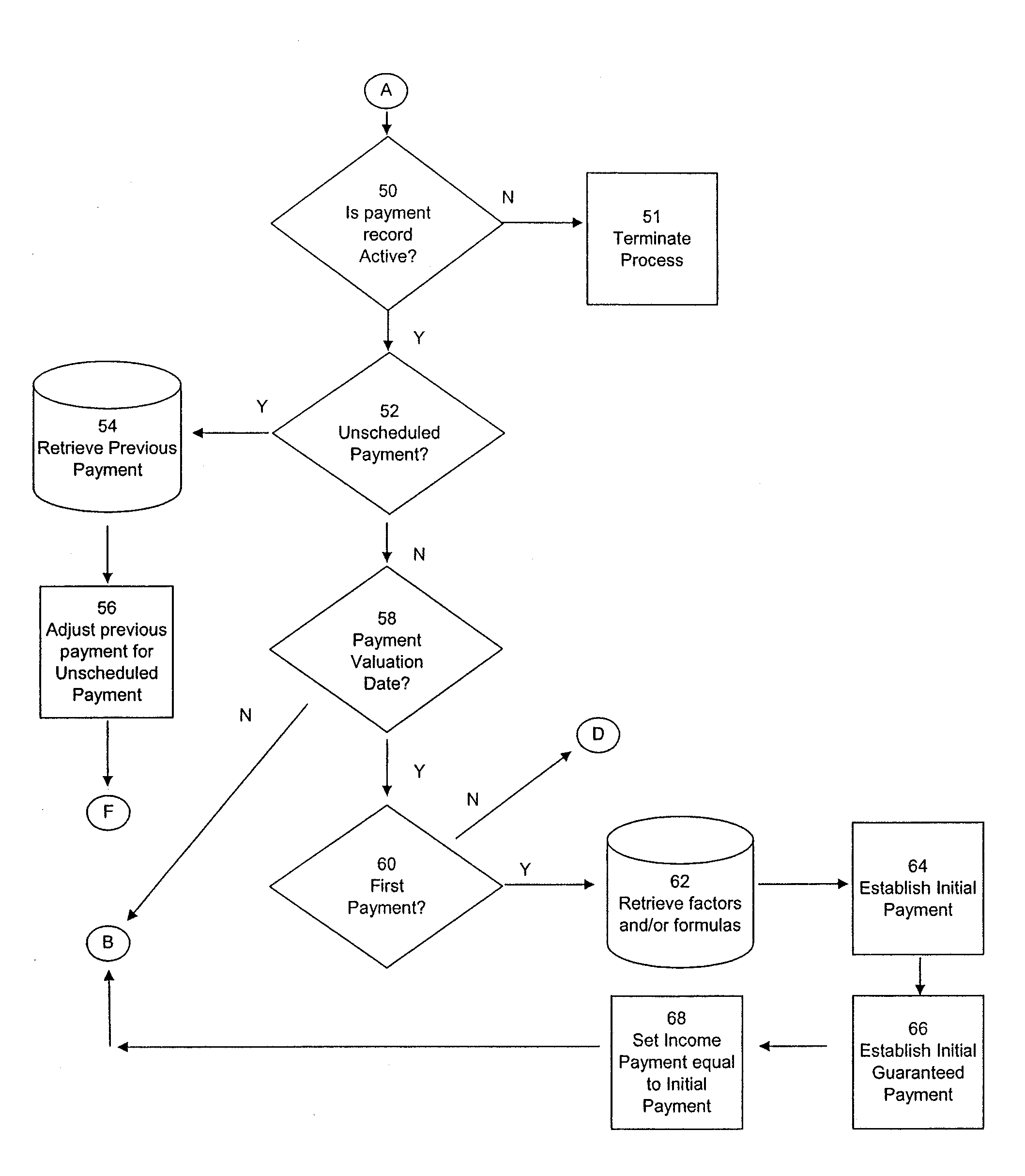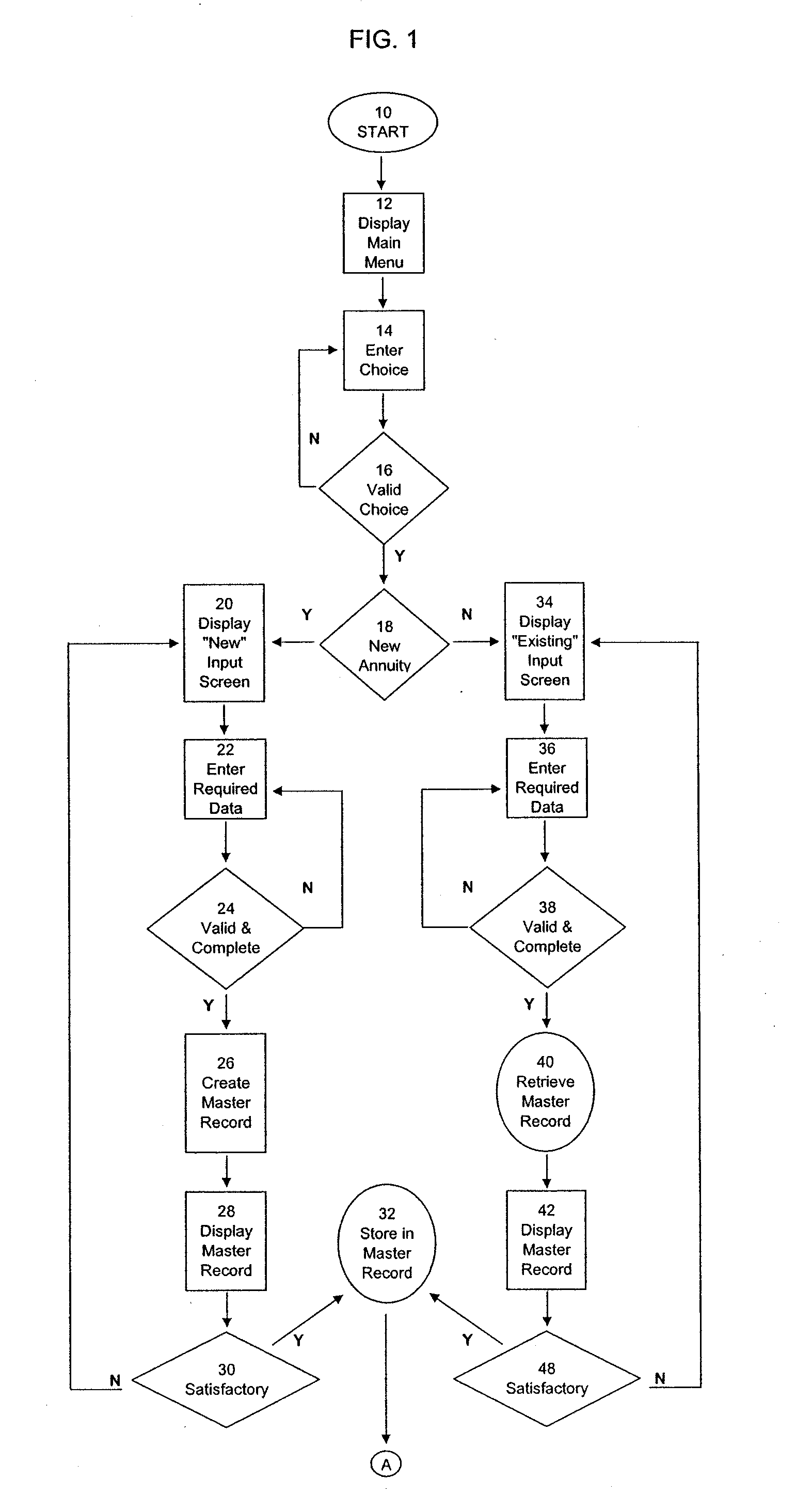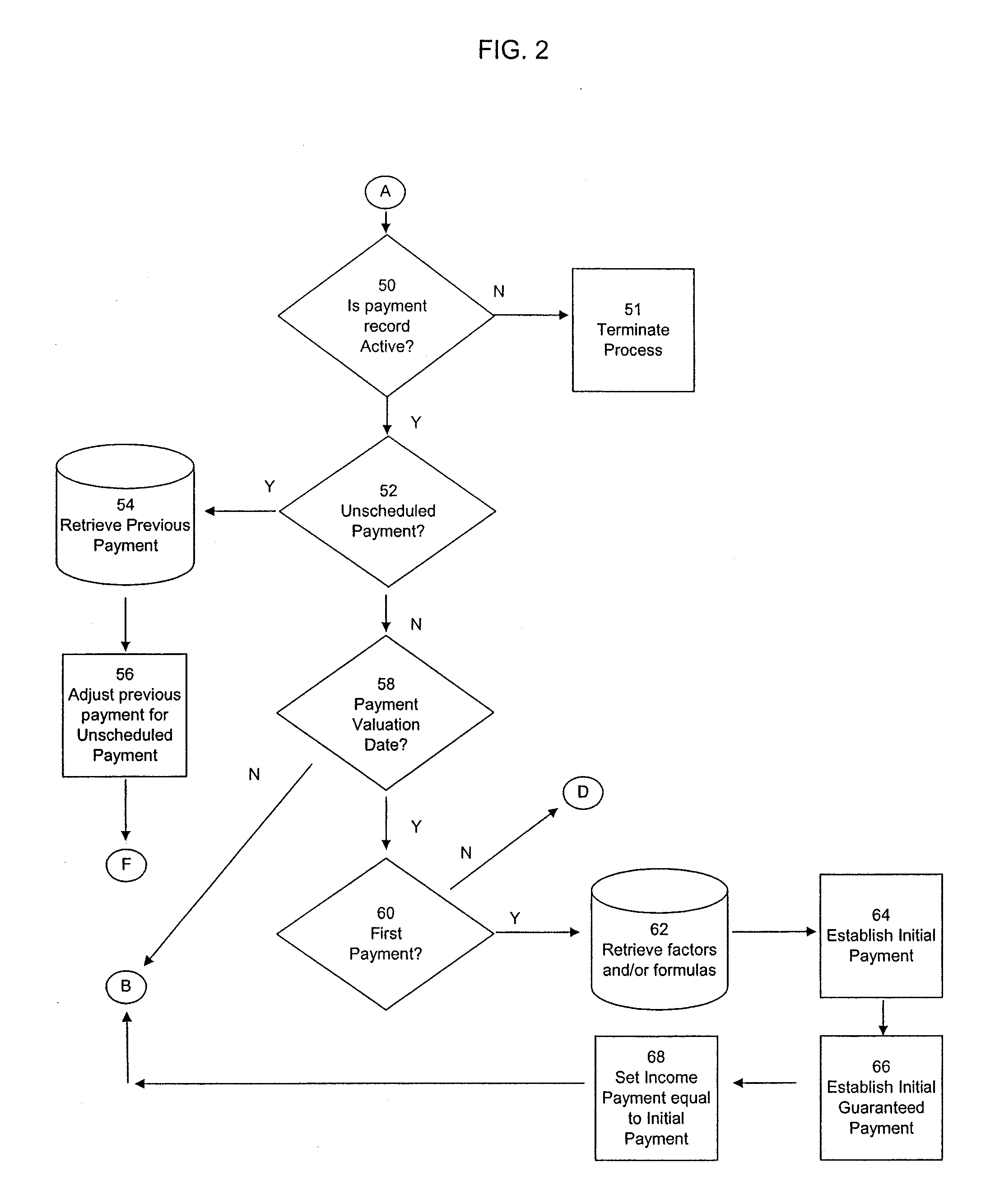Method and system for administering index-linked annuity
a technology of index-linked annuities and annuities, applied in the field of financial products, can solve the problems of loss of liquidity in the asset which comprises the premium, annuitant may “lose” a substantial portion of the original premium, and annuitant no longer has access to the assets used to establish the accoun
- Summary
- Abstract
- Description
- Claims
- Application Information
AI Technical Summary
Benefits of technology
Problems solved by technology
Method used
Image
Examples
Embodiment Construction
[0051]Following are examples of specific products which incorporate principles of the present invention. These examples are presented for purposes of illustration only, and to further demonstrate the features and advantages of the present invention. The scope of the invention is not intended to be limited to these examples, and it will be readily apparent to those of skill in the art that variations may be introduced to particular products without departing from the principles set forth herein.
[0052]FIG. 6 is a table which illustrates a first detailed example. In this example, the income payment for the first year is determined, and is expressed as a percentage of the annuity premium. This percentage is determined by the offering company, and may vary based upon the age and gender of the policy owner, as well as by other factors. Subsequent income payments are adjusted annually by a percentage which is equal to the change in the Consumer Price Index during that policy year. In this ...
PUM
 Login to View More
Login to View More Abstract
Description
Claims
Application Information
 Login to View More
Login to View More - R&D
- Intellectual Property
- Life Sciences
- Materials
- Tech Scout
- Unparalleled Data Quality
- Higher Quality Content
- 60% Fewer Hallucinations
Browse by: Latest US Patents, China's latest patents, Technical Efficacy Thesaurus, Application Domain, Technology Topic, Popular Technical Reports.
© 2025 PatSnap. All rights reserved.Legal|Privacy policy|Modern Slavery Act Transparency Statement|Sitemap|About US| Contact US: help@patsnap.com



